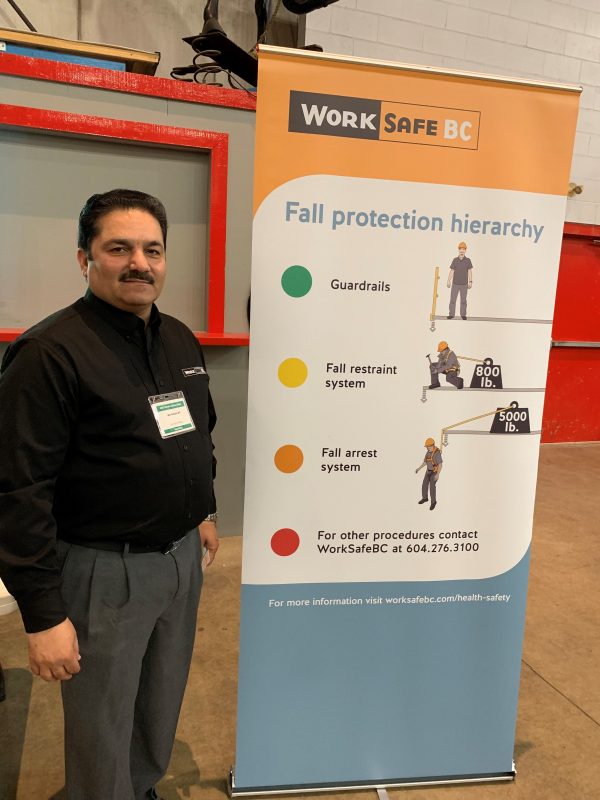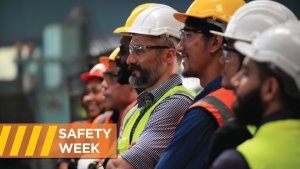Lower Mainland construction companies covered the gamut from fall protection to harmful materials at a recent safety seminar.
WorkSafeBC occupational safety officer Sandeep Mangat detailed best practices and “good to know” facts to attendees at the fourth annual Construction Expo in Cloverdale, B.C.
Mangat stressed to the audience that WorkSafeBC regulations are the bare minimum in terms of employers implementing safety procedures.
“Every regulation is written in blood,” Mangat said, meaning every regulation developed has come about due to an incident or a serious injury.
He added while WorkSafeBC expects employers to go over and above minimum rules, there is a filtering process in place so “we aren’t going to every little thing.”

Mangat pointed to calls that come in with no factual basis as an example of a situation where filtering would take place.
“Sometimes one roofer gets the contract and another one doesn’t, and guess what…we get a call,” he said.
In the Lower Mainland, Mangat said, WorkSafeBC has two teams dubbed “Construction East” and “Construction West” dedicated only to construction issues.
“We have 40 people in the Lower Mainland just down construction, that’s all they do. We also have a dedicated asbestos team,” he said.
He also cautioned the audience that an occupational safety officer has more power on a jobsite than a police officer as long as they are on the site during reasonable hours and focused on worksite related issues.
Before an officer visits a site, he added, it is likely WorkSafeBC has observed the site using long-range cameras and other technology. The officers are already aware of specific infractions occurring onsite.
“Don’t lie to a prevention officer. Most times if they’re coming to your site, they’ve already driven by a site or observed it,” Mangat said.
For any project with a value over $100,000 he said, a notice of project must be filed 24 hours before a project begins and 48 hours beforehand if the project is asbestos related.
“The idea behind this is to help officers use their time efficiently and do scheduled inspections. Generally, officers will know what happening in their region and who has filed,” he said.
Fall protection is a major point of emphasis for WorkSafeBC in 2019. Mangat said sometimes “cosmetic appliances” are spotted, which then leads to an officer inspecting the site.
“Make sure you know how to put equipment on properly, you have the right anchors, and make sure the safety harness, belts and lifelines are all Canadian Safety Association (CSA) approved,” he said.
Training and orientation is the responsibility of the employer. Any employee under 25 must be trained by the employer and a 13-point “Young or New Worker Orientation” checklist must be completed and initialed by both the employer and the employee.
“You only have to do it once, when you hire them. This can all be done at a toolbox meeting. But the mantra of WorkSafeBC is ‘if it’s not documented, it’s not done,’” Mangat said.
He also addressed multilingual documentations and noted more Spanish speakers are coming to the Lower Mainland for both farming and construction work, necessitating an update of existing materials.
There are also current documents in Mandarin and Punjabi, he noted.
Mangat also said while the industry is cognizant of the dangers of asbestos, awareness of other substances isn’t as high.
“The other things we are really focusing on is lead, mercury and silica. People aren’t aware of what silica does, so we’re trying to explain about silicosis and lung cancer, going down to the core level people. There are programs we run, we have an exposure control plan dedicated to silica, but it’s a matter of getting out there with more media awareness to explain to people what the requirements are,” Mangat said.











Recent Comments
comments for this post are closed